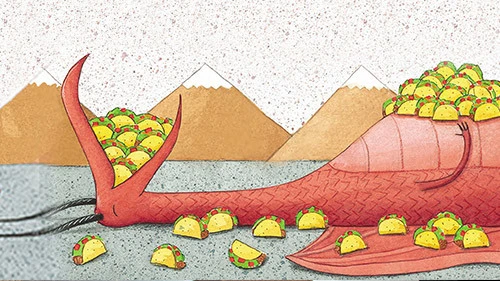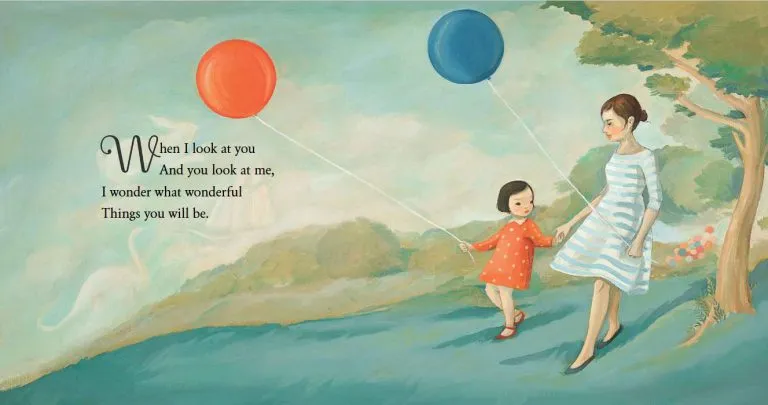I Dreaded Black History Month, Until a Novelist Opened My Eyes

I was always an avid reader, the kind of kid who’d wander through the library stacks, running my fingers along the hardcovers’ spines, judging them not by their covers but by size (the bigger, the better). Once I collected my books — my treasures — I would sneak away, ready to be transported to a new world, a new life.
This was true for every year of my childhood. Every season, and every month — except February.
When Black History Month came around, well-meaning teachers and librarians would haul out books related to the “celebration” of black history. Yet there was very little to celebrate in this pile. Often old and dated, the books skewed heavily toward distilling information, facts and figures about slavery and the civil rights era. They were concerned with the struggle — the burden — of being black in America, and often presented information in a way that was didactic and, well, boring.
Don’t get me wrong, it is important for America — and the world — to remember everything that black Americans have endured and overcome. But Black History Month is more than a time to focus on the pain of our past. It is an opportunity to find joy in our history; to look at ourselves as more than victims or secondary characters or sound bites; to see our ancestors as true, living, three-dimensional beings.
Reading nonfiction is crucial, but at times, to truly see ourselves as historical figures, we have to turn to fiction.
Several historical fiction titles from my childhood won Coretta Scott King awards, which recognize children’s books by African-American authors and illustrators. There was Mildred Taylor’s “Roll of Thunder, Hear My Cry” and Walter Dean Myers’s “Fallen Angels.” I understand now that these books are wonderful; that they tell important stories that should be passed from generation to generation. Yet I struggled to connect with them. From the opening pages, I was wading into a world filled with pain.
As a black child growing up in the South, I needed my books to create a world in which I wished to dwell. I needed my books to dangle a promise that would keep me reading.
I needed Christopher Paul Curtis.
I was in college when I first heard of Curtis’s “The Watsons Go to Birmingham — 1963,” which was published in 1995 and celebrates its 25th anniversary this year. I was majoring in civil engineering, but my secret desire was to write for children. Curtis’s debut was awarded a Coretta Scott King Honor as well as a Newbery Honor that year. I knew it was one I was going to have to read.
But that title made me pause. “The Watsons Go to Birmingham — 1963.” I didn’t know squat about the Watsons, but I for sure knew what happened at the 16th Street Baptist Church in Birmingham, Ala., on Sept. 15, 1963, when four young black girls were killed in a bombing carried out by the Ku Klux Klan.
Yet another story about black pain.
But then I opened the book to the first chapter, titled “And You Wonder Why We Get Called the Weird Watsons.” That was not what I was expecting.
I kept reading, becoming best friends with 10-year-old Kenny Watson as he told us all about his hometown, Flint, Mich.: “It was so cold that if you were stupid enough to go outside your eyes would automatically blink a thousand times all by themselves, probably so the juices wouldn’t freeze up. It was so cold that if you spit, the slob would be an ice cube before it hit the ground.”
This was historical fiction — but there was no sense that a history lesson lurked. No forced moral seemed to be in the works. It was … fun!
Curtis knew exactly what he was doing. By the time the Watsons made it to Birmingham, and that horrible bombing took place on the page, I was no longer a detached reader. I was no longer looking at the book as someone distanced from the past it was set in. I was right there, in the scene, in the moment, as Kenny looked through the rubble, searching for his sister. I was right there, muttering, “Please, no,” when Kenny placed his hand on that little girl’s shiny, shiny black shoe.
This is one of the strengths of the best historical fiction: It allows us access to difficult topics. By seeing this tragedy through Kenny’s eyes, we’re able to see how the character responds to the situation, which in turn helps a young reader form a response. There is no filter, no distance, between us and history. We’re not just reading facts about what happened. We’re experiencing it.
But “The Watsons Go to Birmingham — 1963” is so much more than a book about tragedy. These were the “Weird Watsons” after all. This was a family who loved one another, laughed with one another, made fun of one another and always supported one another, even while living through one of the most turbulent times in American history. This was black joy at its best. And it’s this joy that defines us, perhaps even more so than our struggles.
Years later, as I began writing my own historical novel, “The Parker Inheritance,” I used some of these same techniques to fashion my story. But instead of humor, I leaned on mystery: a secret letter, a mysterious benefactor, a fortune promised to whoever solved the puzzle. I set my story in the 1950s, when black Americans could be forced from their homes and their lives, all because their hopes and dreams were too big — too threatening — for white America.
Writing an entirely fictional story like “The Parker Inheritance” also allowed me to add the necessary nuance. In 2020, it’s easy to look back and proclaim that the integration of the education system was the best course of action for black children. It was more complicated for black people to say that in the 1950s, when many black educators lost their jobs to make room for white teachers at historically black schools.
Christopher Paul Curtis went on to write novels such as “Elijah of Buxton,” “The Journey of Little Charlie” and the Newbery Medal-winning “Bud, Not Buddy,” paving the way for other black historical novels for children to lose themselves in.
Any Black History Month bookshelf today should have a copy of Rita Williams-Garcia’s 2010 “One Crazy Summer,” another Newbery Medal winner, set in 1968 Oakland. Through the eyes of a funny, endearing 11-year-old girl named Delphine, we see another side to the Black Panther Party — their breakfast program and summer camp, which were just two of their many social programs.
Other recent favorites include Ronald L. Smith’s “Hoodoo,” about a boy in the Jim Crow South who’s trying to figure out how to do folk magic. The novel gives us a tantalizing whiff of magic as well as a reminder of the importance of spiritual traditions in black culture.
And there’s Lesa Cline-Ransome’s “Finding Langston,” whose protagonist comes of age during the Great Migration to Chicago. Young Langston’s discovery of his namesake’s poetry helps him — and readers — feel a little less lonely in the world.
We need all types of stories for all types of readers, as Chimamanda Ngozi Adichie reminded us in her TED Talk, “The Danger of a Single Story.” During Black History Month, many of us desperately need historical fiction, to tell us stories about a past that is every bit as heartening as it is troubling.




